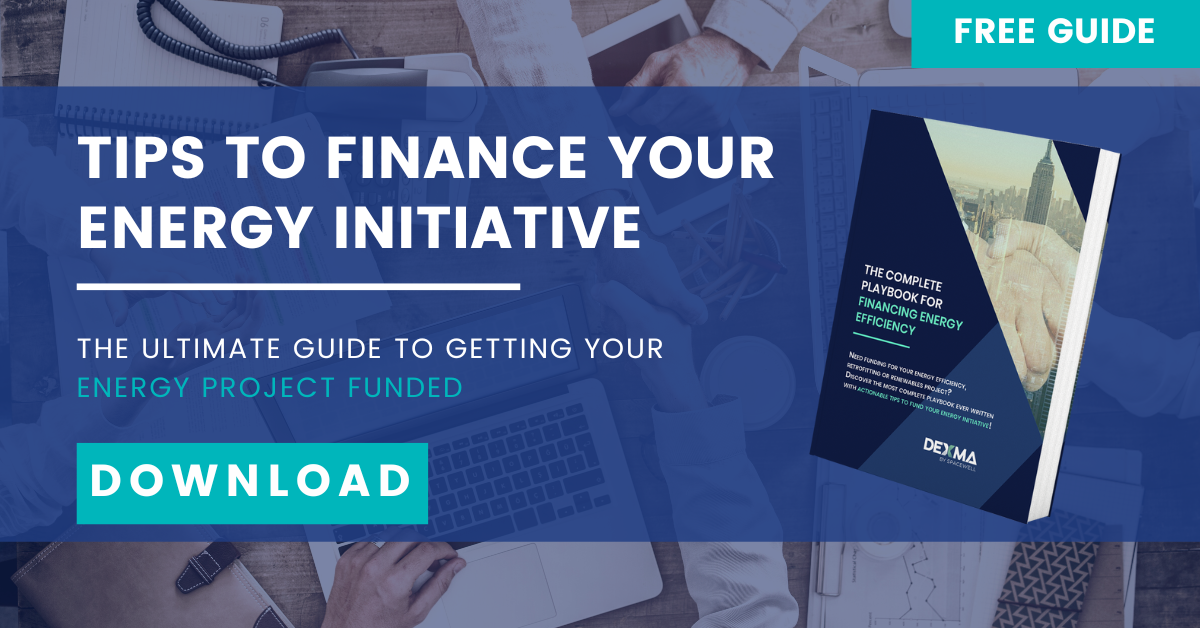The energy transition, climate change awareness and rising energy prices are forcing companies to develop and implement powerful energy management strategies. But what financing tools are available for you to boost your efficiency projects?
In this article, we will look at what is going on in the UK, what energy efficiency strategies were implemented andwhat financing options are available for you and your clients.
Countries and international organisations worldwide have set public policies and specific targets for energy performance, and businesses have a responsibility to contribute to many of them.
The European Union has set the objective to beclimate neutral by 2050, and the UK’s objective runs in parallel. The initial goal was an 80% reduction on greenhouse gas emissions by 2050, but the target has become more ambitious to actually achieve net zero emissions by then. Alongside, the UK Government has set an objective to ensureall electricity is produced by renewable sources by 2035.
In this context, it is vital for companies to commit to controlling and reducing their energy consumption. This can be done by upgrading appliances and insulation, changing your energy provider, monitoring and optimising energy use. To be effective and ensure a real impact, you need to be aware of theexisting financing levers to enable your energy optimisation plans.
Public Policy and Funding for Energy Efficiency Projects
To encourage companies to make the energy transition, states and regions have set up a wide variety of public funding and legislation.
In the UK, theClean Growth Strategyand theNet Zero Strategyare the umbrella to further initiatives to cut emissions while remaining competitive economically. Several efficiency initiatives have been launched and others will be announced over the following months and years, from households to industrial emissions, transport, businesses and the state itself. Some of the key strands of this strategy are:
1. Plan for the Decarbonisation of Industrial Processes
TheGovernment Industrial Decarbonisation Strategyisfocused on cutting down emissions, moving away from fossil fuels and speeding the electrification and use of hydrogen. Industrial processes account for one sixth of emissions in the UK, and aligning industrial growth with the net zero goal is a challenge the UK is tackling.
Incentives and funding plans are being developed to ensure businesses, investors and consumers choose low carbon options, speeding up the process.
2.Public Sector Decarbonisation Scheme
The built environment is one of the largest contributors to GHG emissions (about 30%).This plan for the 2020-2025 period is a package of almost£1bn for upgrades to make the public estate energy efficient. Phases 2 and 3 are focused on decarbonising public buildings, including schools, government buildings and hospitals.
Public authorities applicationsare now closed, but you may still be able to access this programme through your local authority once allocations have been made in 2022. Get in touch with your Local Enterprise Partnership or local authority for further details.
3. Funds for Small and Medium Enterprises
The Carbon Trust is a useful source for advice and guidance onwhere to obtain finance for your SME energy efficiency project across the UK. The grant schemes in England and Wales have ended, but you can address yourLocal Growth Hub假设新信息和指导programmes will be launched.
If you live in Northern Ireland or Scotland, you can find information on SME loans through theEnergy Saving Trust.
4. Environmental Tax Relief
Across the UK,businesses can get access to environmental tax discountsif you commit to reduce your carbon emissions. By entering a voluntary CCA (Climate Change Agreement) with the Environment Agency, you can obtain discounts on energy costs and tax reliefs. There are a series of limits, conditions and exemptions depending on the type of business, but it is definitely asource of energy savings to take into account. Some additional good news is that the scheme has been extended until 2025.
5. Access to European Funds
Although the UK is no longer part of the EU, it still has some links with European and international programs and can obtain funding through some of them.
This is the case of the research and innovation programmeHorizon Europe, with astrong focus on sustainability and energy efficiency actions. In this new position as Associated Country, UK firms can still participate and receive grants for their projects.
Private Sources of Financing
1. Energy Performance Contracts and Third-party funding
Some actors propose to finance energy efficiency projects with the gains (or savings) obtained.It represents a balance between the energy efficiency guaranteedby the energy performance contract that must be achieved,and the cost, the service, the rentthat will be paid to the service company.
内皮祖细胞(能量沟纹e Contracts) are part of the framework of third party financing. Briefly, the contract involves an energy reduction and the repayment of the investment is based on the savings generated.
You can read this recentarticle to learn more about EPC.
2. Return on Investment from previous Energy Savings
The aim of any energy optimisation project is to reduce consumption and therefore your bills. If we add into the equation the soaring energy prices, organisations have a real interest in optimising their consumption.
Businesses, as well as individuals, want to save money.
能源效率的策略可以帮助你节省costs to then be able to allocate that money difference in another part of the business where it creates more value. Thisself financing optionis an interesting one to consider asit limits your external dependencies and helps you focus on your goal. Who knows, maybe once you’ve achieved some energy savings… Those can be allocated to a larger energy efficiency programme!
3. Green Lending and Private Investment
Green lending can be an optionto consider for larger energy efficient programmes. Investors and banks are shifting towards sustainability projects and investing in firms who are (or want to be) more efficient. The project needs to meet a specific set of criteria, normally environmental and sustainability related, linking the loan to an obligation to deliver such sustainability objectives.
These projects are highly considered in the market and they increase the investor’s chances to obtain ROI. Also, investing in responsible firms contributes to their own ESG (Environmental, Social and Governance) promises and goals.
4. The Fintech Option
When we talk about fintech, we are referring to financial technologies.
On the one hand, you have the option of Crowdfunding, a financing strategy with which you can seek funding through donations from people who are interested in your energy efficiency project. And from where you can obtain tax benefits or products of your interest produced after microfinancing.
And on the other hand, you have the option of Crowlending. This modality is similar to crowdfunding, but through loans. In other words, you can publish your project online on platforms such asECrowd, which specialises in campaigns related to renewable energy and energy efficiency projects, and make yourself known to sustainable investors.
Conclusion
The climate crisis, coupled with policy measures, is leading us towards an optimisation of energy consumption at all levels for the agricultural, tertiary and industrial sectors by 2030.
Theimplementation of energy efficiency and optimisation projects is therefore essentialand can be achieved through the implementation ofenergy analysis, monitoring and optimisation solutions.
Moreover, thanks to the financing levers, companies can define real strategies for ecological transition in order to meet the established objectives:
- be more productive.
- anticipate future ecological obligations and not be surprised by new laws and regulations.
- create new opportunities for your business, while protecting the environment and being responsible.
This is the perfect time to develop your energy optimisation plans, or to put them in place if you have not yet done so.




